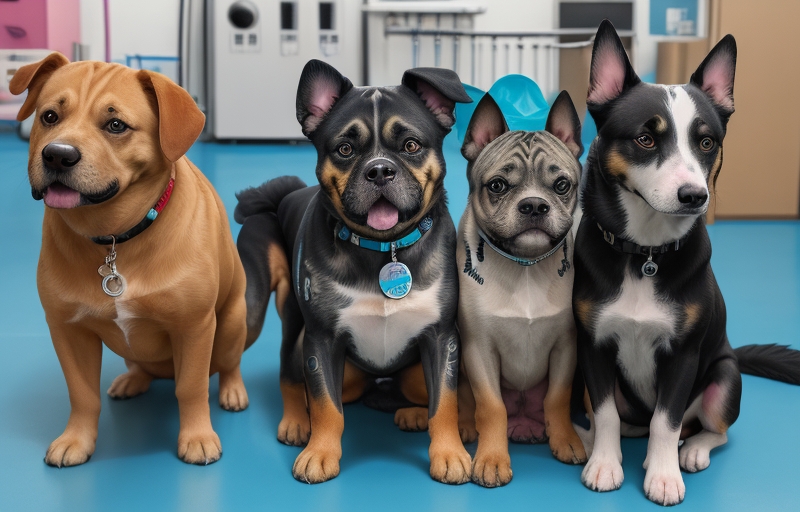Are you looking to learn about Dog spaying and neutering. This is common veterinary procedures aimed at controlling the pet population and promoting health. In recent years, a growing trend involves the use of tattoos to signify that a dog has undergone spaying or neutering. This article explores the reasons behind this practice, its significance, and common questions surrounding it.
The Purpose of Dog Spay and Neuter Tattoos
Dog spay and neuter tattoos serve as a visible and permanent indicator that a pet has undergone the surgical procedures of spaying or neutering. This practice is commonly adopted by responsible pet owners and veterinary professionals for several reasons:
Identification:
- Spay and neuter tattoos provide a clear and easily identifiable mark that a dog has been sterilized. This helps prevent unnecessary repeated surgeries, ensuring that the procedure is not accidentally performed again.
Avoidance of Unwanted Reproduction:
- The primary purpose of spaying and neutering is to prevent unwanted breeding and the resulting overpopulation of pets. By having a visible tattoo, it becomes evident to others that the dog is incapable of reproducing, aiding in responsible pet ownership.
Stray and Shelter Animals:

- Stray dogs and those in shelters may not have comprehensive medical records. The tattoo serves as a visible sign of sterilization, helping animal control officers and shelter staff quickly identify spayed or neutered animals, which can influence decisions on housing and care.
Community Awareness:
- Spay and neuter tattoos contribute to raising awareness about the importance of responsible pet ownership within communities. When other pet owners see these tattoos, it may encourage them to consider and pursue spaying or neutering for their own pets.
Reducing Health Risks:
- Spaying and neutering have health benefits for dogs, including a reduced risk of certain cancers and behavioral issues. The tattoo acts as a reminder to both the owner and veterinarians that the dog has undergone these procedures, aiding in providing appropriate medical care.
Legal and Ethical Compliance:
- In some regions, spaying and neutering may be required by law or encouraged through various programs. The tattoo serves as a visible confirmation that the owner has complied with such regulations, promoting ethical treatment and control of the pet population.
Pet Recovery:
- If a pet is lost and later found, the presence of a spay or neuter tattoo can provide crucial information about the animal’s background and medical history. This aids in reuniting lost pets with their owners more efficiently.
Types of Spay and Neuter Tattoos

Spay and neuter tattoos are a common practice used by veterinarians to indicate that a cat or dog has been sterilized. This helps in preventing unnecessary surgeries and ensures that animals are not subjected to the same procedure multiple times. Here are the different types of spay and neuter tattoos:
Ear Notching:
- Method: Ear notching involves making small, distinctive cuts or notches on the ear of the animal. These notches are usually made in specific patterns that can be easily recognized.
- Advantages: Ear notching is a visible and straightforward method. It is a low-tech, low-cost solution that doesn’t require any special equipment.
- Considerations: While effective, ear notching may not be as aesthetically pleasing as other methods, and some people argue that it can be perceived as inhumane.
Ink Tattoos on the Skin:
- Method: Traditional ink tattoos involve using a tattoo gun to create a permanent mark on the skin, usually near the surgical incision site.
- Advantages: Ink tattoos are visible and can be applied during the spaying or neutering surgery itself. They are a reliable method and have been used for many years.
- Considerations: Some may find the use of ink tattoos to be less aesthetically pleasing, and the tattoos may fade or blur over time.
Microchips:
- Method: Microchips are tiny electronic devices implanted under the skin. These chips contain a unique identification number that can be scanned using a microchip reader.
- Advantages: Microchips offer a more sophisticated and permanent way of identifying spayed or neutered animals. They are also useful for general pet identification and reunification in case of loss.
- Considerations: While microchips are highly effective, they require special equipment to read the information. Additionally, they may not be as visible as ear notches or skin tattoos.
Conclusion:
Dog spay and neuter tattoos are an innovative approach to promoting responsible pet ownership, preventing accidental breeding, and aiding in the identification of sterilized dogs. As more pet owners embrace this practice, it contributes to creating a community of informed and conscientious caregivers, ultimately benefiting the well-being of dogs and reducing the strain on animal shelters.
Read Also: Dog Spay and Neuter Tattoos
FAQs:
Q1: Why do some pet owners opt for spay and neuter tattoos?
Spay and neuter tattoos serve as a visible and permanent marker to signify that a dog has undergone sterilization. This practice promotes responsible pet ownership, prevents accidental breeding, and aids in community awareness.
Q2: What are the common types of spay and neuter tattoos?
The common types include traditional ink tattoos applied to the skin, ear notching involving small cuts on the ear, and the use of microchips. The choice of method may vary among veterinarians based on preference and the specific needs of the dog.
Q3: Is the tattooing process painful for the dog?
No, the tattoo is typically applied while the dog is under anesthesia for the spaying or neutering surgery, ensuring a pain-free experience.
Q4: How long do spay and neuter tattoos last?
Spay and neuter tattoos are designed to be permanent and should last throughout the dog’s lifetime.
